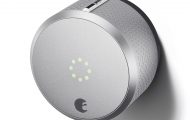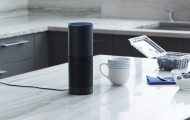Article
Why the CSIRO is building smart homes for elderly Australians | IT News
My Comments
The typical situation to assure the welfare of an elderly, disabled or chronically-ill person who is living alone at home is to have them wear a pendant or wristband panic-button that signals carers or loved ones if they need help.
But issues have been raised about these devices being, for example, left somewhere in the home because the person forgets to wear it after they have finished an activity which may not play well with these devices. As well, these wearable devices are only of value if they trigger the device in response to an emergency situation like a fall.
The CSIRO are looking towards the use of the “Internet Of Everything” as a way of monitoring the welfare of these people, a use case which I do frequently refer to in the context of this technology.
Here, they would use commonly-available sensor technology like the motion sensors that are part of every intruder-alarm system, or flow meters and power meters on appliances; or door-contact sensors on wardrobes or kitchen cupboards to observe for normal activity.
Along with this, the CSIRO effort also wants to use health sensors like blood-pressure monitors or scales to register a person’s health statistics and it has been valued because the patients will be wanting to know how they are doing along with the ability to provide more knowledgeable information to their doctor about their symptoms.
They want to use knowledge of past health incidents affecting elderly, disabled or chronically-ill people to train the machine-learning algorithm to identify the abnormalities at an earlier stage rather than when a serious incident occurs. Of course, any machine-learning setup needs to be able to adjust to newer legitimate changes so as to avoid any “false positives”.
A question that will always be raised is the cost to set up this kind of observation with it costing less than AUD$3000 because of the use of common technologies and components rather than specialised hardware.
The topic of privacy has also been raised because the CSIRO monitoring system is based on cloud technology and Internet-based data access, and is of importance to reduce the risk of elder abuse. Here, the goal is to allow the patients to control their data so that it is exposed to whoever they trust in a granular manner. This is more so with relatives because they may be trusting of certain people within their family.
As well, the features that have been raised as being of importance to the elderly community for this personal-health monitoring setup include the ability to know who is at the door, the ability to engage in videocalls with family and friends along with the ability to know if one has forgotten to turn off a tap or appliance. This can easily affect older people who may become increasing forgetful about these things such as a burner on the newer gas cooker being left on but turned really down or not being able to hear clearly that the washbasin tap is still running.
The effort that CSIRO is undertaking is to be able to allow an elderly or other vulnerable person to live independently yet be able to know that help is at hand while their loved ones are sure that they are well.



